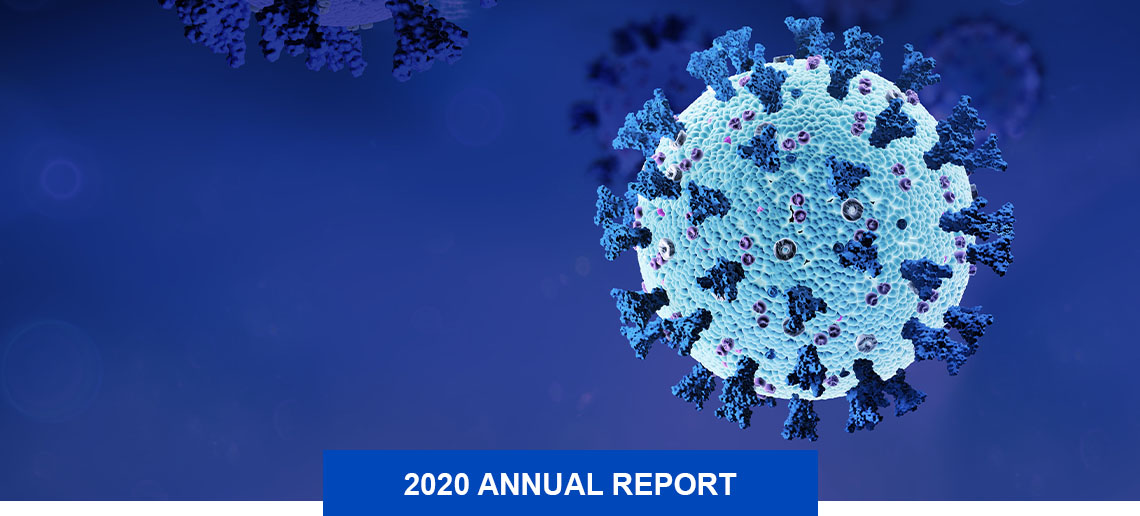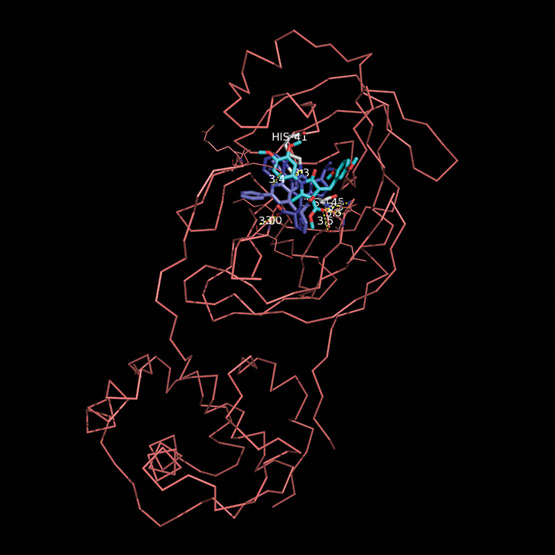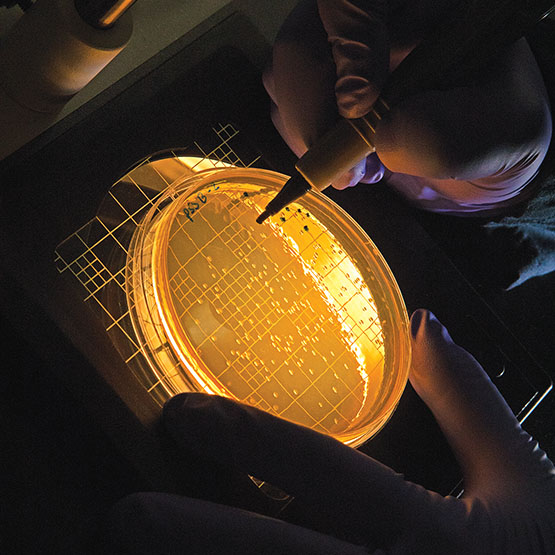
When 2020 began, no one could anticipate what the year would bring.
Soon after news broke of the outbreak of a novel coronavirus, Southwest Research Institute began working with the scientific and medical communities in San Antonio and across the U.S. to gain scientific insights into the disease. Once a 3D image of the virus protein was made available, SwRI’s drug development team used our Rhodium™ software to virtually screen millions of drug compounds to find potential treatments. In just 21 days, our chemists had screened 5 million possible compounds, selected 60 for toxicity testing, and ultimately recommended that 44 undergo antiviral assay. Then we began using U.S. Department of Defense supercomputers to turbocharge this already powerful tool in the hunt for therapeutics.
SwRI is working with Iowa State University to develop a nasally administered coronavirus vaccine formulation for preclinical testing. SwRI is leveraging over 70 years of microencapsulation formulation expertise and our Current Good Manufacturing Practice-compliant capabilities to help develop a safe, effective COVID-19 vaccine using Iowa State’s proprietary process and polymer.
Through the San Antonio Partnership for Precision Therapeutics, we joined forces with Texas Biomedical Research Institute, UT Health San Antonio and The University of Texas at San Antonio on four collaborative programs to advance global COVID-19 intervention for early-stage antidotes and a potential vaccine. Our artificial intelligence experts also worked with these collaborators to frame infection dynamics of SARS-CoV-2 as a deep recurrent neural network, one of four models used by the city of San Antonio during the pandemic.

This Rhodium image shows possible therapeutics docked with the novel coronavirus protein, illustrating how the therapy could thwart disease processes.

SwRI’s microbiological, biosafety level 2 lab quickly ramped up to support numerous programs addressing the COVID-19 pandemic, while maintaining support for advanced vaccine strategies, antimicrobial formulation screening, and disinfectant and antimicrobial technology assessments.
To address the shortage of medical supplies, the SwRI-operated South Central regional office of the Texas Manufacturing Assistance Center worked with regional nonprofits, government entities and businesses to launch the Medical Manufacturing Alliance of South Central Texas, aligning regional manufacturing supply chains with medical product demands.
To take cleaning crews out of harm’s way, we are participating in an Advanced Robotics for Manufacturing Institute project to develop the Mobile Autonomous Industrial Disinfector (MAID), a robot system to perform surface disinfection for industrial workspaces. The collaborative multi-axis robot will be outfitted with a disinfection system and a sensor suite to identify areas that need cleaning, execute the disinfecting process and keep records of completed tasks.
Microbiologists are investigating how to better prepare for future personal protective equipment, disinfectants and whole room disinfection needs.
Meanwhile, our emissions specialists rapidly repurposed techniques and technology developed to support clean air initiatives and applied them to address mask shortages during the pandemic. For the benefit of medical personnel working on the front lines, we reconfigured our Automotive Particle Filtration Lab to evaluate emergent face mask supplies. This work almost immediately discovered that eight out of 11 KN95 respirator samples were counterfeit and failed to meet the efficacy standards claimed on their packaging. Chemists also used our Floodlight™ and Searchlight™ software to assess chemical exposure from mask materials.
We also stayed vigilant toward critical client work in progress at SwRI when the pandemic hit. When stay-at-home orders hampered clients’ ability to monitor their projects, we launched new techniques to allow them to stay in contact with our technical staff to discuss progress, problems and opportunities.
